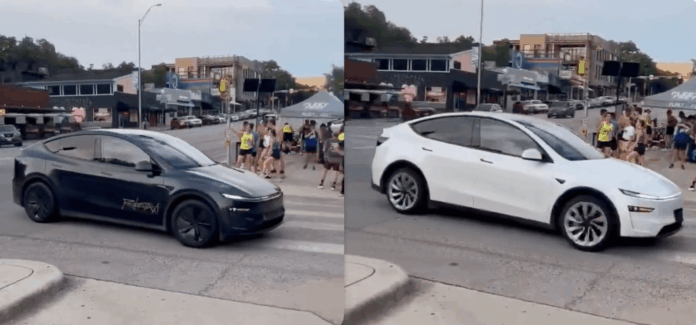Tesla’s driverless robotaxi has been spotted in Austin for the first time, but it is being followed by a trailing car with a driver.
CEO Elon Musk now says that Tesla aims to “tentatively” start its service on June 22.
Tesla now plans to operate its own small internal fleet of vehicles with dedicated software optimized for a geo-fenced area of Austin and supported by “plenty of teleoperation.”
The company has been discussing the launch of its paid service in June, but as we reported, it only officially began the “testing” phase earlier this week, according to Austin’s official website.
Musk admitted that Tesla only started testing the system without safety drivers at the end of May.
In comparison, Waymo tested its system, which was already in operation driverless in other cities, for 6 months with safety drivers and 6 months without safety drivers before launching its service in Austin earlier this year.
Now, a Tesla Model Y without a driver was spotted in Austin for the first time:
From the video, we can see that a second Tesla vehicle is trailing the driverless vehicle, likely with a remote teleoperator ready to take control or activate a kill switch.
As we previously reported, Tesla has been building a team of teleoperators to remotely control its vehicles when needed.
Just this week, days before the planned launch of the service, Tesla has posted a new job listing for engineers to build a teleoperation system with as low latency as possible.
Having a trailing car can address the latency problem.
After sharing the video above, Musk highlighted that these are unmodified Model Ys, like the ones that Tesla delivers to customers. This prompted someone to ask when Tesla plans to deliver unsupervised self-driving to customers, as he promised every Tesla vehicle produced since 2016 would be capable of doing.
Musk didn’t confirm it, but he said that the custom software running on those vehicles have about 4 times more parameters than the current version (FSD v13) in customers vehicles and he could see that being deployed in the customer fleet later this year:
It’s a new version of software, but will merge to main branch soon. We have a more advanced model in alpha stage that has ~4X the params, but still requires a lot of polishing. That’s probably ready for deploy in a few months.
As we previously reported, this fleet deployment in Austin is quite a moving of the goal post for Tesla, which has been promising unsupervised self-driving in all vehicles since 2016.
This service is only going to work in a geo-fenced area where Tesla is optimizing its FSD software to perform better, and it is supported by teleoperation, something that can’t be scaled to the customer fleet.
Electrek’s Take
I don’t know why Musk wants to emphasize that Tesla is using the same vehicles it delivers to customers as if it’s a giant advantage over Waymo.
We know that Tesla’s hardware approach is much cheaper than Waymo. That’s not new. The real question has always been about safety and performance.
I can see this program eventually helping FSD progress, but as you can see, Musk is not stating that unsupervised self-driving in customer vehicles will be achieved when the new customer version of FSD, which comes out of this custom software, reaches the market.
Even if this 10x the miles between disengagement in the current version, which would be impressive, Tesla would still only be at about 5,000 miles. That’s behind the competition and nowhere near what’s needed for level 4 unsupervised self-driving.
At this point, I expect Tesla to start admitting that HW4 will not support unsupervised self-driving in customer vehicles by the end of 2026.
FTC: We use income earning auto affiliate links. More.


